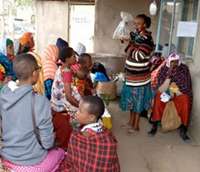
Figure 6. ECHO East Africa staff teaching at a health clinic. Source: ECHO East Africa Staff
Nutrition and health education for community groups, clinic attendees, and secondary and primary school youth can provide them with the skills and knowledge necessary to promote good health and prevent HIV/AIDS (Figure 6). Knowledge of nutrition, and life skills such as communication, relationships, decision-making, and goal setting help translate knowledge into behavior change. Peer educators and clinic staff can continue to educate, support and follow up to ensure success. It may include voluntary counseling and testing, peer education support activities, and talent or cooking competitions.

Figure 7. Harvesting cassava leaves (kisanvu). Source: ECHO East Africa Staff
Perennial vegetables in drought-prone areas can provide sustainable year-round nutritive sources of food for low-income families. Especially Chaya, Moringa, and Cassava leaf trees (Figure 7) are the highest plant protein sources, stay green even during droughts, and provide sovereignty to families over their sources of food providing nutritious greens throughout the year. They can be a substitute for animal protein. Chaya and Leaf Cassava are less prone to damage by livestock because of non-palatability but must be adequately cooked for safe consumption. People with limited land or water or people with limited physical strength who cannot care for larger gardens alleviate problems many people have with annual vegetable production.
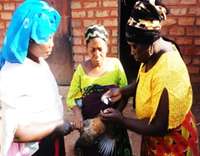
Figure 8. Chicken vaccination. Source: ECHO East Africa Staff
Chicken vaccination and rural poultry husbandry improvement boost the incomes of the marginalized. Newcastle Disease kills 70% of the chicken population in sub-Saharan Africa but is controlled by vaccinating chickens which are the livestock of the poor. Improved poultry survivability has a major impact on the lives and well-being of a large portion of the population. Vaccinations allow chickens to live longer thereby producing more eggs and growing to a larger size for consumption. Increased nutrition and income follow. Mobilizing community vaccinators can sustain services and generate income from vaccinating chickens against this disease (Figure 8). Training is needed in poultry nutrition, health, and reduced predation through improved housing, and support to accompany campaigns to vaccinate chickens in entire villages.
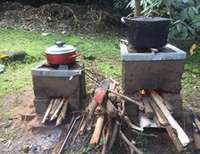
Figure 9. Fuel-efficient rocket stoves in operation. Source: ECHO East Africa Staff
Fuel-efficient ‘rocket’ stoves can reduce smoke and the drudgery of firewood collection (Figure 9). Rural women and girls often spend up to 25% of their time searching for firewood. Another advantage is the smokeless hot flames which reduce lung illnesses and eye irritation. The stoves can utilize small-diameter fuel, and use less than half of the fuel of traditional 3-stone hearths. They can be made according to the size needed for a family or school kitchen.

Figure 10. Immunization of cattle. Source: ECHO East Africa Staff
Cattle immunization (Figure 10) against East Coast Fever helps to combat this tick-borne disease which normally kills 50+% of pastoralists’ annual calf crop. This indirectly increases the nutrition and income of pastoralists by protecting their assets and livelihoods which depend upon cattle, sheep, and goats. Pastoralist communities need to immunize their animals by linking them to private veterinarians; if groups of cattle are vaccinated at the same locale it becomes cost-effective. This requires meetings to coordinate, a video showing in pastoralist communities to raise awareness of the importance of immunizing against East Coast Fever, linking veterinarian service providers, and coordinating the first Immunizations of local herds with cost-recovery.
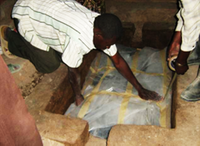
Figure 11. Underground storage of grain. Source: ECHO East Africa Staff
Improved grain storage in rural homesteads can reduce the current 40%+ grain losses from improper storage. Traditional grain stores such as underground stores, ferro-cement stores, use of PIC bass, or modifying traditional stores, can reduce mold from moisture and heat damage, and improve sorting and drying techniques before storage. Storing grains and pulses purchased from outside the community when the prices are lowest is a good alternative to the difficulty of producing grains and pulses in harsh drylands.
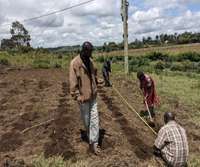
Figure 12. Establishment of a well-watered garden. Source: ECHO East Africa Staff
Minimum tillage farming - conservation agriculture (CA) enables the production of grains and pulses to be successful in drier areas than conventional farming methods. It is enhanced by making compost, manure tea, use of green manure/cover crops (GM/CCs), and other innovations to establish fertile soil for ‘Well-Watered Gardens’ (Figure 12), a convincing first step toward wider conservation farming. CA minimizes water use. GM/CCs reduce labor for weeding and the requirement of external inputs by improving the soils. ECHO EA is developing implements to enable CA through oxen and donkey draft power.
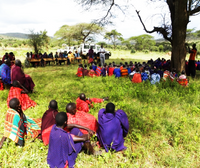
Figure 13. Community conversation about range management. Source: ECHO East Africa Staff
Holistic range management/pasture demonstrations/grazing plans support rangeland management through community agreements on natural resource use. The degradation of rangelands needs to be reversed, and this is hard work. Seasonal rotation of pasturelands needs to be reinstated. Options like water harvesting using crescents, eradicating invasive weeds, controlled burning, over-sowing, and mobbing of livestock, can be implemented on a small scale to try to give succulent pasture species a chance to revive. Grasses need to go to seed to persist. By testing other rangeland interventions, pastoralists can more easily determine site-appropriate technologies and scale them up.
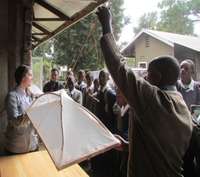
Figure 14. Low-resource food drying tent. Source: ECHO East Africa Staff
Improved fruit and vegetable drying to reduce 50% losses can make a difference in readily available quality food throughout the year. Food drying helps rural communities to use excess fruits and green garden products later in the dry season, or for sale to augment incomes. Food preservation knowledge and practices contribute to reducing protein, vitamin A, and folic acid deficiencies in mothers and children, especially during the dry season. Alternative low-cost drying structures (Figure 14), appropriate drying methods, information on how to reconstitute dried foods, and preparation with taste testing will convince community members of the worth and appropriateness of dried foods.